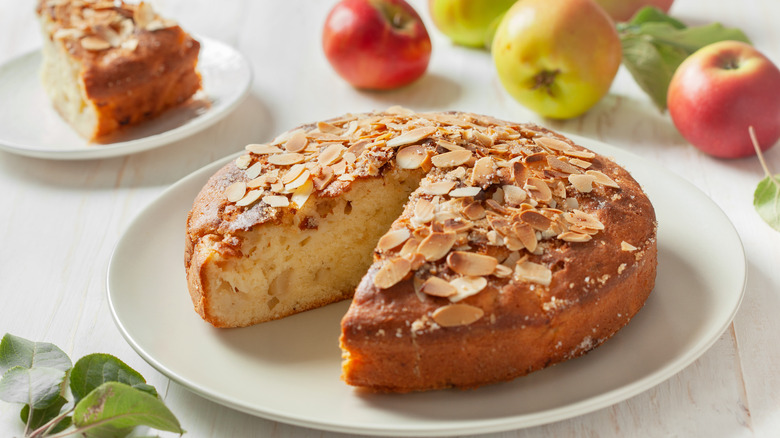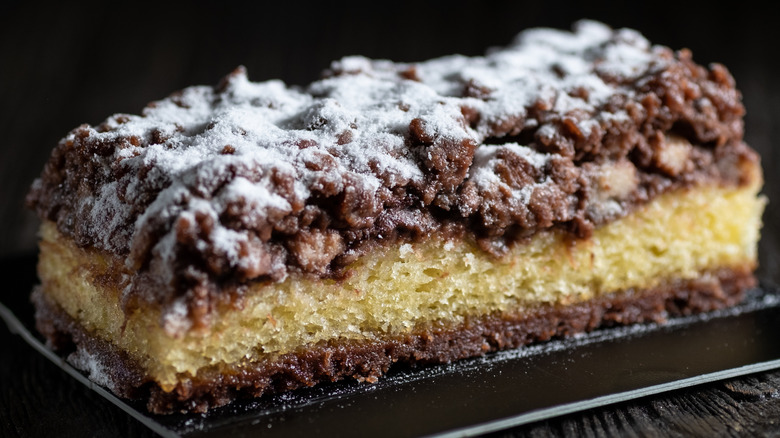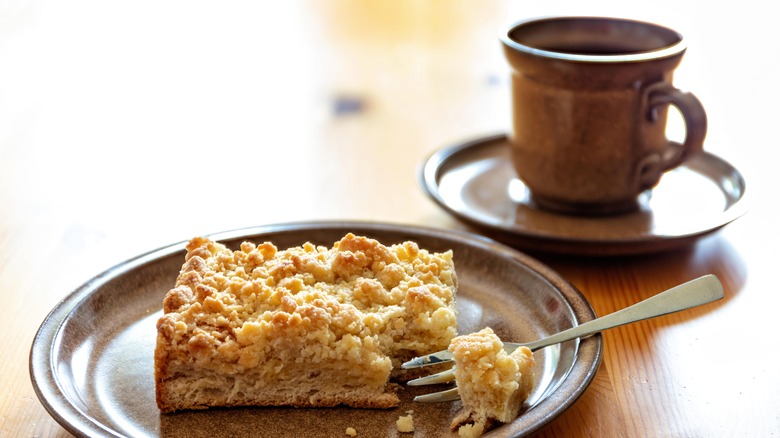What Makes German Coffee Cake Unique?
If you've had a German coffee cake then you know that the cake differs from a garden-variety coffee cake. It has its own distinct texture and taste that gives the morning or afternoon (if that's when you drink your cup of joe) pastry a unique identity. German coffee cake, or kaffeekuchen as it's called in German, comes in several variants, which we'll get to in a minute, but it's known for being a single-layer cake.
German coffee cake contains yeast, which gives the cake its denser texture. Not only does yeast make a cake rise, but it also helps add moisture to the finished product as well. For that reason, German coffee cakes tend to be denser cakes with a heavier mouthfeel. The texture of the dough is generally marked with pockets or holes throughout caused by fermentation. This texture helps distinguish kaffeekuchen from their lighter, crumblier culinary cousins. Instead of yeast, other variants of coffee cake tend to use baking powder and flour instead. Baking powder reacts with other ingredients to create an airier, spongier texture. As such, it has a very different overall mouthfeel than kaffeekuchen does.
That being said, German coffee cake may rank among the oldest coffee cakes. Coffee and cake is a tradition.
History of German coffee cake
It's very possible that the first coffee cake came from Germany. These early cakes were not quite like the coffee cakes of today — resembling sweet bread made with honey. They also included nuts and dried fruits. Coffee was grown in the Arabian Peninsula in the 15th century but didn't make it to European countries like Germany until the 1600s. The Danish popularized eating cakes with coffee, but the practice moved to Germany as well.
In particular, many Americans began turning to coffee during the late 1700s in defiance of British tea amid the American Revolution. The 19th century introduced the idea of a specific cake designed to be eaten with that morning cup of joe in the United States. German and other European immigrants brought their recipes and practices to America. In particular, one German practice is called kaffee und kuchen, which as you would guess involves eating coffee cakes and drinking coffee. Typically, coffee and snacks are served in the afternoon around 3 p.m. and 4 p.m. Generally, kaffee und kuchen are shared with both family and friends.
Variations of the recipe
While all kaffekuchen's share some similarities, namely being made with yeast, it's safe to say that no two recipes are exactly alike. You see, in German, kuchen literally means cake. In fact, the country has two words for cake — kuchen and torte. They're differentiated by the fact that torte refers to cakes that have a cream filling. Meanwhile, all sorts of variants fall under kuchen including cakes that have a fruit topping.
Many German immigrants passed their cake recipes down from generation to generation. They clung to their cultural heritage while they faced a new environment in America. Due to the language barriers between some younger family members and older family members, the exact origins of the recipes may be lost but the recipes themselves persevere. Some families opted to pass down their recipes to children in family recipe books.
Historically, kuchen with fruit toppings were fixed with whatever fruit families had available to them at the time of baking. Custard was also another popular option as well. With that in mind, consider a variety of fruits that are your favorite and try experimenting. That being said, an authentic German coffee cake resembles a loaf of sweetened bread. Just don't confuse it for a German chocolate cake.


